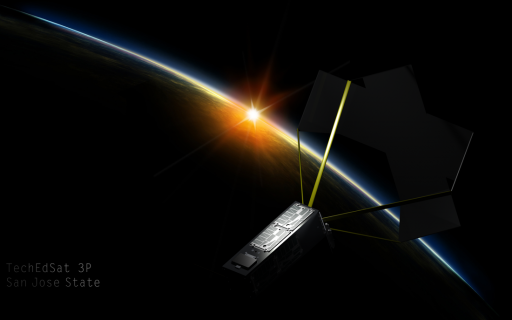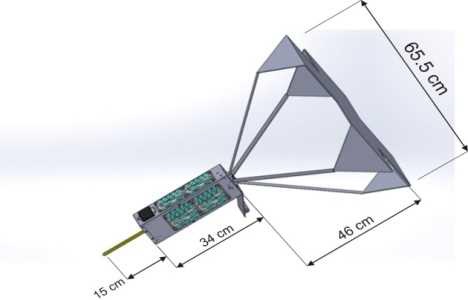TechEdSat-4

Another CubeSat that is hitching a ride aboard the Cygnus spacecraft is TechEdSat-4, a 3U CubeSat built and operated by San Jose State University (SJSU) and the University of Idaho. The satellite builds on the success and lessons learned from previous TechEdSat projects particularly TechEdSat-3p that was released from ISS in 2013 and became the first mission to perform an in-flight test of an Exo-Brake passive de-orbit system. TechEdSat stands for Technical Education Satellite.
TechEdSat-4 uses commercial off-the-shelf components and largely re-uses heritage components that flew on the TechEdSat-1 and TechEdSat-3p missions. TechEdSat-1 was a 1U CubeSat designed to test the basic satellite design, avionics, stabilization and communication systems. This one-unit core satellite bus is essentially re-used on TechEdSat-4 to provide the basic satellite functions such as commanding, power generation & supply as well as communications while the other 2 units of the satellite (2/3 of its volume) carry the payload.
The TechEdSat Electrical Power System features a scalable plug-and-play architecture that allows the addition of batteries and solar panels transitioning from a 1U to a 3U spacecraft. The satellite features body-mounted solar panels, dedicated electronics for power distribution and the management of the state of charge of a Li-Ion battery. Latch-up Current Limiters are used for circuit protection.

Spacecraft control is provided by a ÅAC Microtec microprocessor that controls all satellite functions including attitude control and communications that are accomplished via Iridium and GPS satellites using a short-burst data modem. TechEdSat-4 is also demonstrating a satellite-to-satellite communications system that will allow for more frequent comm sessions with the satellite that lead to a higher accuracy of satellite altitude and position predictions which are important for the operation of the Exo-Brake.
TechEdSat-4 will fly an Exo-Brake to orbit that is deployed once the satellite is released to demonstrate a Passive De-Orbit System for satellites.
The Exo Brake is a deployable device for use in free molecular flow regimes in an exo-atmosphere environment. The device is a tension based structure that has a number of advantages over other designs such as high stability and the possibility of drag modulating to provide targeting capability.
As part of its demonstration in orbit, TechEdSat’s Exo-Brake would be deployed to begin a 10-day de-orbit experiment during which the GPS unit of the satellite provides position data that is coupled with Earth-based tracking data to model the exo-atmospheric descent of the satellite. TechEdSat will have a high ballistic coefficient of 5kg/m² leading to a rapid orbital decay.
This experiment will be the start of a series of demonstrations with even faster de-orbit scenarios in the future and the development of the capability of rough targeting of the re-entry point by actively modifying the drag of the vehicle using advanced navigation data. This drag modulation scheme will be first demonstrated on TechEdSat-4 to provide initial data in an operational environment. Future TechEdSats also will validate hardware for possible nanosatellite missions to the surface of Mars.
